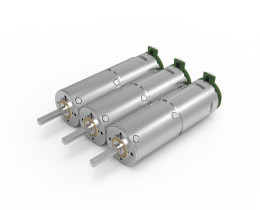Do Servo Motors Need a Gearbox? Let’s Talk Real-World Scenarios
Picture this: a factory floor humming with machines. A robotic arm swings into action, lifting a heavy component with precision. But here’s the question buzzing in the background—does that servo motor need a gearbox to pull this off? The answer isn’t a simple yes or no. It’s more like asking, “Do you need shoes to run a marathon?” Sure, you could go barefoot, but why risk blisters when the right gear boosts performance?
.webp)
The Lowdown on Gearboxes and Servos
Servo motors are the workhorses of automation—fast, precise, and responsive. But even the strongest workhorse has limits. Imagine a servo motor trying to lift a 50-pound load without a gearbox. It might manage, but it’ll strain, overheat, and wear out faster. Add a gearbox, though, and suddenly that motor multiplies its torque while reducing speed to a manageable pace. It’s like swapping a sprint for a steady jog—efficient, controlled, and built to last.
“But wait—when exactly do I need one?” Let’s cut to the chase. If your application demands high torque at low speeds (think conveyor belts, heavy-duty robotics, or packaging machinery), a gearbox isn’t just helpful—it’s non-negotiable. On the flip side, lightweight tasks like 3D printing or small CNC machines might skip it. The key? Match the gearbox to the job.
Q&A Time: Let’s Demystify
Q: Won’t a gearbox slow things down?
A: Depends. Gearboxes trade speed for torque. Need to lift something heavy without burning out the motor? That’s where gears shine.
Q: What about maintenance?
A: Modern gearboxes aren’t the clunky relics of the ’90s. Sealed units with lifetime lubrication? They’re out there. Just pick quality—like KPOWER’s integrated servo-gearbox systems, designed to minimize downtime.
Why “One-Size-Fits-All” Doesn’t Work
Ever tried using a sports car to tow a trailer? It’s possible, but you’ll wreck the engine. Similarly, slapping a random gearbox onto a servo motor risks mismatched performance. For example, a planetary gearbox offers compact efficiency for tight spaces, while a worm gearbox excels in high-torque, low-speed scenarios. The trick is knowing which tool fits the puzzle.
The KPOWER Edge
Let’s get real—no one wants to gamble on equipment. That’s why KPOWER focuses on synergy. Their servo-gearbox combos aren’t just parts slapped together; they’re tested as a unit. Think of it like a coffee blend—beans matter, but the roast defines the flavor. By optimizing torque curves and backlash tolerance, KPOWER ensures the motor and gearbox speak the same language. No hiccups. No surprises.
Final Takeaway
Gearboxes aren’t just “add-ons”—they’re force multipliers. Whether you’re automating a bakery or building aerospace components, the right pairing unlocks reliability. Still unsure? Start with the load, speed, and environment. Test scenarios. Crunch numbers. And if you’re eyeing longevity, remember: a well-matched gearbox isn’t an expense—it’s insurance.
So, next time you see a servo motor in action, ask yourself: Is it dressed for the race? Because in automation, the right gear makes all the difference.


































.webp)

